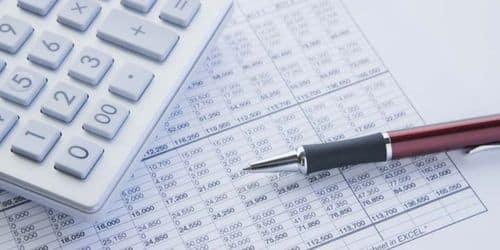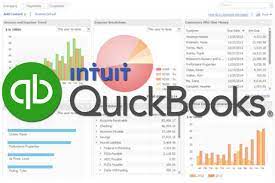The profit and loss statement (P&L), also known as the income statement, is one of three financial statements that businesses must produce on a regular basis. Market analysts, investors, creditors, and even self-employed people carefully examine the profit and loss statement in order to assess a company’s financial condition and prospects for future growth. This article is a guide on what you need to know about a profit and loss statement and how it differs from a balance sheet, with examples.
What Is a Profit and Loss Statement (P&L)?
A profit and loss statement (P&L), also known as an income statement or a statement of operations, is a financial report that summarizes a company’s revenues, expenses, and profits/losses over a specific time period. The profit and loss statement demonstrates a company’s ability to generate sales, manage expenses, and generate profits. It differs from the cash flow statement in that it is prepared using accounting principles such as revenue recognition, matching, and accruals.
Profit and Loss Statement Structure
A company’s profit and loss statement is presented over a specific time period, such as a month, quarter, or fiscal year.
The main categories found on the P&L are:
- Revenue (or Sales)
- Cost of Goods Sold (or Cost of Sales)
- Selling, General & Administrative (SG&A) Expenses
- Marketing and Advertising
- Technology/Research & Development
- Interest Expense
- Taxes
- Net Income
Net Income Impact of Accounting Principles on the Profit and Loss Statement
Looking at a profit and loss statement, it may not appear obvious, but the final figure at the bottom (i.e., the total profit or total loss) may be very different from the actual amount of cash made or lost.
The following are the primary factors that contribute to the disparity between profit and cash generation:
- The revenue recognition principle states that revenue is frequently recognized before cash is received (which creates accounts receivable on the balance sheet)
- The matching principle states that expenses are matched to revenues during the period(s) in which those revenues are earned.
- The accrual principle states that income and expenses should be recorded when they occur rather than when cash is received, which can cause revenue and expenses to differ significantly from cash flow.
Beyond the Profit and Loss Statement
To get a complete picture of a company’s financial health, analysts must look beyond the profit and loss statement. To properly evaluate a company, the balance sheet and cash flow statement must be examined.
1. Balance Sheet Analysis
The balance sheet summarizes a company’s assets, liabilities, and equity at a given point in time. This snapshot of the company’s financial position is useful for determining:
- The asset base of the company – its ability to generate future revenues
- Liabilities – future obligations that the company must meet.
- Working capital – the short-term liquidity position of the company.
- Capital structure – how a company is financed through debt and equity.
#2. Examination of the Cash Flow Statement
The cash flow statement shows how much cash a company generated and consumed over time. It is divided into three parts: cash from operations, cash from investing, and cash from financing. This statement is critical for evaluating:
- The ability of the company to generate cash from operations
- Creating Free Cash Flow
- How much money has been collected? (debt and or equity)
- The period’s net change in cash position
- The cash balance at the beginning and end of the period
Profit and Loss Statement Analysis (P&L)
One of the primary responsibilities of a professional financial analyst is to analyze a company’s profit and loss statement in order to make recommendations about the company’s financial strength, the attractiveness of investing in it or acquiring the entire business.
Profit and loss statement analysis examples include:
- Year-over-year comparisons (horizontal analysis) and industry benchmarking
- Margin analysis which includes gross profit margin, EBITDA margin, operating margin, and net profit margin.
- Analysis of trends: are metrics improving or deteriorating?
- Rates of return include return on equity (ROE) and return on assets (ROA) (ROA)
- EV/EBITDA, P/E ratio, Price to Book, and other valuation metrics
A Profit and Loss Statement Example
The profit and loss statement is typically a simple presentation of a company’s revenues, costs, and net profit for the time period covered by the statement. Companies issue annual profit and loss statements, and some also issue quarterly statements. P&L statements typically follow the following format:
| Total Revenue | $1,000,000 |
| Less Cost of Goods Sold | $378,700 |
| Gross Profit | $621,300 |
| Gross Profit Margin | 62.13% |
| Less Expenses | |
| Accounting/Legal Fees | $15,500 |
| Advertising/Marketing | $27,000 |
| Depreciation | $14,000 |
| Utility Bills | $4,200 |
| Insurance | $20,200 |
| Interest/Finance Fees | $16,800 |
| Rent for Offices | $78,700 |
| Repairs/Maintenance | $15,400 |
| Wages/Salaries/Benefits | $201,500 |
| Other Expenses | $8,200 |
| Total Expenses | $401,500 |
| Net Profit | $219,800 |
| Net Profit Margin | 21.98% |
Why Are Profit and Loss Statements Made Public?
P&L statements are made public for a number of reasons. Many people, including accountants, economists, and investors, are interested in a company’s internal financial operations. Because some companies are so large, even the owners may not have a complete understanding of the company’s financial movements without consulting the P&L. Assessing a company’s financial strength, for all of these professionals, entails taking a close look at total revenue, the amount of debt or leverage, additional investments, secondary operations, and tax burden.
These statements assist businesses in determining current performance in relation to projections and developing future forecasts. They also compare performance to that of other companies in the same industry to identify wasteful spending or areas for improvement.
What Investors Think About Profit and Loss Statements
This information is used in calculations by investors and lenders to determine a company’s risk level. Companies must provide evidence of their financial standing and ability to make consistent payments when applying for loans. If a company’s profit and loss statement shows that it does not generate enough revenue to cover existing loan payments, banks are less likely to lend additional funds. A drop in income can sometimes indicate a loan default. Investors may be hesitant to invest in a company that is highly leveraged, also known as high-geared, because the amount of equity required to cover loan repayments means that less is available to pay shareholder dividends.
Profit and Loss Statement For Self-Employed Individuals
Although you are not required to file a profit and loss statement for your business with any regulatory agency, there are several compelling reasons for a self-employed individual to do so.
Self-employed people have a lot of paperwork to keep track of, from invoices to quarterly taxes. While there is no legal requirement that you file a profit and loss statement with any regulatory agency, you should still consider compiling one so you know exactly what’s going on with the finances of your small business. In the long run, this attention to detail can mean the difference between business success and failure.
How Do You Prepare A Profit and Loss Statement?
The simplest way to create a profit and loss statement is to use your favorite spreadsheet programs, such as Excel or Google Docs, though this type of report is built into many accounting software packages. Most business owners prefer to create a monthly statement so that they can see each period separately as well as the entire year at a glance, which is accomplished by simply totaling the rows. The time frames should be displayed at the top of the spreadsheet.
In addition to the rows for income and expenses, you should have a row for net income, which is your income less your expenses. You can total all the rows on the far right to quickly check your company’s financial progress on a monthly and/or yearly basis.
You should probably break down your income and expense rows into individual items for maximum benefits, such as book purchases for research and your internet connection. If you get paid from multiple sources, you can itemize those as well, making it easier to track increases and decreases from different clients.
A profit and loss statement for self-employed individuals can be an important part of staying on top of financial transactions throughout the year and can provide a methodical way for you to monitor the ups and downs of your business. Although you can handle this responsibility on your own, an online service provider can add an extra layer of assurance that your company is in the best financial shape possible.
What Is The Difference Between A Profit and Loss Statement And A Balance Sheet?
Although the balance sheet and the profit and loss statement share some financial information (such as revenues, expenses, and profits), there are significant differences between them. The main one is as follows: A balance sheet reports a company’s assets, liabilities, and shareholder equity at a specific point in time, whereas a profit and loss statement summarizes a company’s revenues, costs, and expenses over a specific time period.
Each Statement’s Purpose
Each document is designed for a specific purpose. Balance sheets are constructed in a broader sense, revealing what the company owns and owes as well as any long-term investments. Unlike an income statement, the balance sheet shows the full value of long-term investments or debts. The term “balance sheet” refers to how the three major accounts eventually balance out and equal each other. All assets are grouped together in one section, and their total must equal the total of all liabilities and shareholder equity.
The profit and loss statement answers a single question: Is the company profitable? While accountants use the P&L statement to help them judge the accuracy of financial transactions, and investors use it to judge a company’s health, the company itself can use it for productive purposes. Closely monitoring financial statements reveals where revenue is strong and expenses are incurred efficiently, as well as the inverse. For example, a company may notice increasing sales but decreasing profits and seek new ways to reduce operating costs.
Profit in Relation to Total Value
The profit and loss statement shows net income, which indicates whether a company is in the black or red. The balance sheet demonstrates how much a company is truly worth or its total value. Though both of these are oversimplified, this is how investors and lenders frequently interpret the P&L statement and the balance sheet.
It is critical to remember that investors should not confuse earnings/profits with cash flow. It is possible for a company to be profitable while not generating cash flow, or to be profitable while generating cash flow.
How Are the Statements Calculated?
Accountants must add up the company’s revenue on one portion of the P&L statement and all of its expenses on another. The total amount of expenses is subtracted from the total amount of revenue, yielding a profit or loss. The balance sheet contains several different calculations, all of which are performed as representations of one basic formula:
Liabilities + Owner’s Equity = Assets
Is Profit and Loss Statement Same As The Income Statement?
Yes, a profit and loss statement is also known as an income statement.
What Are the Three Most Important Parts Of A P&L?
A profit and loss statement is divided into three sections: sales, costs, and profits.
What Is Another Name For Profit and Loss Statement?
A profit and loss statement is also known as an income statement, an earnings statement, a revenue statement, an operating statement, a statement of operations, and a statement of financial performance.
What Are the Three Financial Statements?
The income statement, balance sheet, and cash flow statement are all required financial statements. These three statements are useful tools for traders to use when analyzing a company’s financial strength and providing a quick picture of its financial health and underlying value.
In Conclusion,
A profit and loss statement shows the amount of a company’s profit and losses to investors and other interested parties. Revenue and expenses are shown when they are incurred rather than when the money moves, and the statement can be presented in either a detailed multi-step or a concise single-step format.






